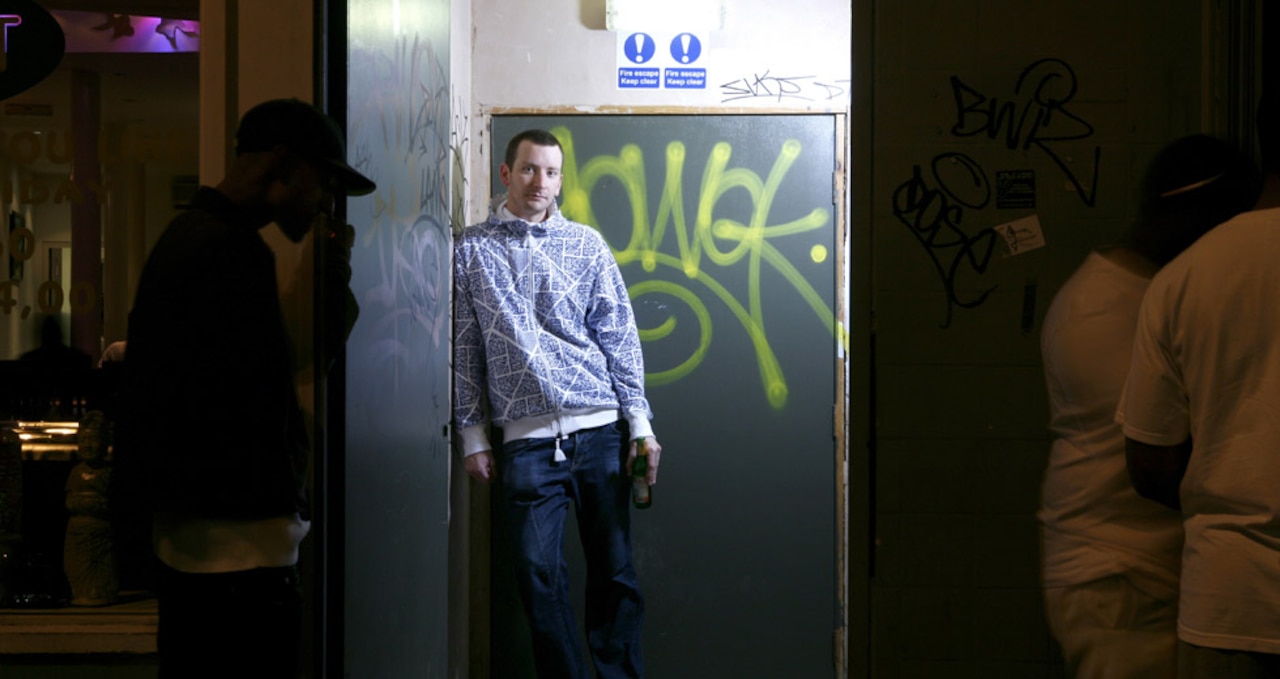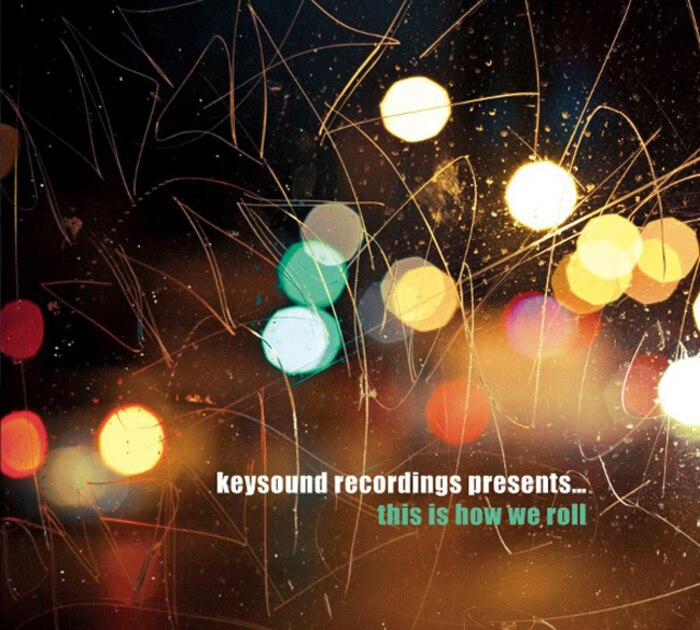Interview: Blackdown
There are a jumble of prefixes that you could attach to Blackdown’s name. Journalist, blogger, DJ, producer and label owner are the usual ones. But while he was often best known for his writing a few years ago, nowadays you might need to change the order in which you recite those words. His label – Keysound – has become one of the most vital in UK music, and his latest album – 2012’s Dasaflex, alongside production partner Dusk – was a similarly potent collection of hybrid tunes that gleefully took from every corner of the dance music spectrum.

Perhaps most important in his subtle transformation from journalist/DJ to DJ/journalist, though, is the label’s Rinse FM show. It’s here that he’s premiered many of the tracks that comprise Keysound’s This Is How We Roll, one of the most exciting compilations of new music to emerge this year – a collection of tracks that properly introduce the growing family around the imprint. We caught up with Blackdown to chat about the label, finding his own flex and why “landfill tech house” has taken over as the sound of the UK.
To borrow a question from some of your own interviews, I'd like to start by asking where your head is at musically right now.
Haha, using my own shoddy lines against me! I see: It’s like that, is it? Well, my head is trying to find rich seams of music that do it for me and, if people are unfamiliar with Keysound or our Rinse sets, that’s music that relates to jungle, UK garage, early dubstep, grime, synthy-ish or UK funky but isn’t quite exactly all of those things. It’s stuff that you can dance to but also listen to, that might make you screwface or skank, zone out or explode with love. All of the aforementioned, preferably!
The context to that is that there haven’t been many interesting things about in London in recent years that sounded like that collection of influences. People have been making tech house or what they call “bass” (actually mostly grey techno), or wobble brostep or whatever trap fad of the week. There’s been some cool grime via the Butterz camp and the interesting 80/160bpm paradox, but broadly what we’ve been trying to find is our own flex. It won’t be for everyone: but that’s cool.
Why do you think London went down those less interesting routes at the time it did?
“Why” is always a really difficult issue to address properly. I think, stepping back, there are cycles to these scenes (incubate -> grow -> commercialise/stagnate -> fragment -> incubate…), and that change is the only constant. In other words, despite all our best efforts, dubstep, once it got over its tipping point (beyond the point where it was unclear if it would survive), at that rate of growth and crowd sizes, perhaps was always inevitably going to end up in brostep and halfstep stagnation.
The questions then are: Why are some of these cycles in-sync (i.e. they happened at similar times) and why have two different routes (post-dubstep, post-UK funky) ended up in remarkably similar places (variants of techy house)?
You can see the correlation between trap and brostep: dubstep makes a decent foothold into America, the one-trick-pony variant takes a lead role (because it panders to dynamics large audiences already know, i.e. rock dynamics) but in a relatively short time that trick gets a little dull, so it’s swapped with another similar dynamic large audiences already know ((t)rap). So the timings there are a causation of the growth of dubstep.

Why London’s working class/multi-cultural/pirate/urban crowd started raving to quite similar techy house and why fugitive post-dubsteppers started making it is a double mystery. (Tech house purists sometimes argue they’re wildly different, but musically we’re talking about really similar things: 4x4 kicks, pads, hats on the onbeats 8ths and offbeat 8ths…) Because it’s worth pointing out that five years ago there were MCs saying “bun out funky house” and now there are MCs shuffling (Doller Da Dustman, to name one…). The minimal tech scene and the grime/UK funky/UK garage crowds were very separate, and had been culturally separated for quite some time. Arguably since rave. People might be able to point to exceptions (early FWD>> and Metalheadz were vibrant, cultural crossroads, for example) but, honestly, if you’d asked a producer in Bow in ’05 if they made “minimal tech” they’d have looked at you funny.
So I’ve watched both strands (post-dubstep and house post-UK funky) evolve in the last five years. On one hand you’ve got producers like Appleblim, 2562, etc. introducing Basic Channel aesthetics into dubstep to make this hybrid, to the balance shifting from being inter-disciplinary to being predominantly techy house, which fitted the bigger rooms of the European club circuit and met with crowds already-established expectations. On the other hand you had UK funky, which seemed like the vibey successor to UK garage, yet somehow prematurely faded away in place of the minimal tech scene. Circle were the first guys I noticed doing it, now Mark Radford’s on every flyer tied to every traffic light in London. There’s shuffling videos on YouTube, and anti-shuffling campaigns on Facebook that bear all the cultural friction hallmarks of the UK garage wars of 1998. It kinda all feels upside down: the culture and the crowd feels very ‘nuum, but the music to my ears at least could be in any Euro tech house superclub.
You’ve been calling what you've been playing of late “dark 130” and you’ve already said that you’re getting sent too many “dull dark” beats. I suppose this is what happens when things get a name, but did you expect it to happen so fast?
So, I haven’t really called it anything, I just have tried to use the least constrictive placeholder possible to point to a bunch of things evolving, and “130” [a reference to the tempo a lot of stuff is clustering around] was as shorn of context as I could manage. My 2012 review did mention “dark 130” but only really as a subset of what’s going on, because there are a bunch of producers making interesting dark music around this tempo (Beneath, Wen, Visionist, Logos, Etch, Brunks, Hagan, etc. – though Beneath is going his own way). But I do see them as part of a wider spectrum of sounds and flavas.
There were quite a few dull dark tracks last month ’tis true, but I’d put that down to enthusiasm amongst newer producers. There’s a little momentum around all this, and people are keen to get involved – it’s the natural cycle of things. Two months before we seemed to be flooded by rebore eski. Dark I like, eski I like, but the devil’s in the details with these tunes. Only a few stand on their own, and those are the ones we try and dig up and rep for.
In your 2012 round-up you cut off possible “this isn't futurist” critiques of “dark 130” before I feel they were even leveled. Why did it feel so important to do so?
Eek, panic! Musicians actually thinking about their music. What’s next: journalists simply feeling a beat? Haha, preconception malfunction, it’s all so circular, I think I’m going to implode in a singularity.
Haha, seriously though I dunno… I guess having seen UK garage, then dubstep, grime and then UK funky come around, I have a sense of the cycles and – with that – what certain people will always say. Over time though, I’ve developed a thicker skin. All those different camps who said dubstep would never work, and there were many (UK garage, broken beat, breaks and drum & bass headz), they were all wrong. So the most important thing is just to keep believing in your values and go your own way with the people who share your vista.
For example, recently there was a minor online kafuffle around the use of the placeholder term “130” on account of there being related music at 140 or elsewhere, which I accept to a degree because we do play some stuff at 135, 140 and 160 BPM. But stepping back from the discussion I think the guy involved (the mighty Tom Lea, if you’re asking…) was sorta observing things as a journalist, which is to say, “this is how things are.” Whereas I think these days I’m less interested in how things are and more interested in “how things could be.” I’m trying to curate rather than report now, if that makes sense.
Part of that comes from set selection, the power of the “selecta” when DJing, but here’s a stronger example: at least three of the tracks (Double Helix’s “LDN VIP,” Gremino’s “Monster 130 VIP” and Wen’s “Commotion VIP”) for This Is How We Roll were commissioned by me for our sets. None of the originals were 130 BPM to start with. Yet I see the connections between, say, Wen’s spacious take on grime and Gremino’s rude 8bar flex, or Double Helix’s noir Metalheadz edge and Wen’s darkness, so I am keen to give them a place where they can creatively interact without contamination from their older – and often calcified – parent scenes. And I am keen to give them a place where we can mix and blend them with more swung percussive, tracky stuff like Mista Men’s bumpy 4x4 or Funkystepz’s insane UK funky to keep things vibrant and preserve the number of healthy possibilities.
It’s like the “filter” role in Chris Anderson’s Long Tail. Maybe all this stuff has been out there for a while: Wen making strange dread grime, E.m.m.a. pursuing mournful sour synth jams, Visionist re-imagining his grime – but it was getting lost in all the hype around big room landfill tech house, rebore dubstep and jump up brostep. So what Dusk and I have been trying to do for several years now is find these people, show them we have common cause, give their music a wider platform on our Rinse FM show and bring them together at FWD>> or at the Keysound Nights at fabric. And, from that, others can see where we’re heading and if they’re on that, they can come, hear the sounds, make connections and begin to participate too. And that’s already happened, since lots of the producers on Keysound were just people who listened to the show and got in touch. Now we’re trying to help them get their voices heard, to help them build their own aesthetics, often across bigger canvasses like albums or double packs.
So with regard to “dark 130,” that was just a subheading in a blog post, that’s only a part of what we’re trying to do. I’m really trying to avoid names. If this thing, whatever this thing is, was just “dark” I think it would be mono-dimensional. But as for “this isn’t futurist,” I don’t overtly aspire to futurism. I’ve never really got my head around what that is to be honest: for example, I interviewed Kuedo around the time of his (wonderful) album and he used that term, but then Severant looked back to the ’80s (Blade Runner, Vangelis) as much as it looked forward.
So, on one hand, I’m not concerned about futurism per se. I think the concept makes more sense to others. The reality is that I’m interested in the present more than the future, and so much of the music being made at the moment has none of the values Dusk and I care about, so we’re trying to give them a place – something Kuedo, amongst others, has been very supportive of.
But if the real issue isn’t “this isn’t futuristic” but “this isn’t original” because it’s beholden to parent genres, then what we’ve been trying to is find unique combinations and mutations, such that it’s harder to quickly define what the artists are doing. Take Visionist’s style: is it grime? Or is it closer to Actress? Or juke? The fact that it’s sorta informed by all these yet also is none of these makes it interesting. And I’m confident, having observed these cycles with the birth of dubstep and grime, that if these kinds of mutations are given a place and space to incubate, then new forms will emerge.
Take for example all the refixes of grime classics at the moment. I was arguing with Elijah Butterz about them recently, something I enjoy doing with the mighty Elijah regularly. Perhaps understandably he’s pretty resistant to people refixing grime’s “standards,” even though, as I pointed out, grime has a strong tradition of mutation through irreverent refixing and bootlegging (MoS “Hungry Tiger” v Eskimo, Skepta’s “Gunshot Riddim” etc). He pointed out I might not take well to someone massacring “Anti War Dub,” and certainly what Nero did to MJ Cole’s “Sincere” was an international war crime against music, but equally we’ve been playing Caski’s remix of El-B’s “Buck & Bury.” The original was a Velvet Rooms anthem that I will always be very attached to. I extracted the DAT from Ghost’s studio in Streatham, and was part of saving it from obscurity via Tempa’s The Roots of Dubstep comp. A remix shouldn’t work but it does, taking it to another tempo and vibe.
So while I know where Elijah’s coming from, my take is that I’m enjoying all these new producers (Slackk, Sublo, Moleskin, Goon Club Allstars, Samename, Strict Face, etc.) discovering the wild Wiley Kat Records experiments from a decade ago and making their own twists. After a while they’ll omit the original they’re refixing and what will be left behind is a unique form. It’s like they’re sculptors using a cast with imperfections and those mutation imperfections coupled with the original mould can help grow a new form. Well, that’s what I’m hoping anyway and in the hands of the right producers it should: it seemed to work fine for UK producers’ take on US garage back in the early ’90s. Getting it “wrong” but actually so right.

The active curation that you describe sounds really interesting. Did you hold back from doing that before? Why?
Well, to an extent everyone’s a curator: everyone curates what they choose to listen to. Some of us just get a bit more into it – and share the results. Equally, to use the “Long Tail” terminology again, music blogging is filtering sounds, which is curation; so is DJing and A&Ring, in part. So I always had that in me and I’ve always felt very strongly about music. But the deeper I’ve got into it, the stronger the sense of purpose I’ve had. Especially when so many of the flavours and styles I’ve loved in music have become sidelined in recent years.
I chose to see that as an opportunity, not a disaster. All this has coincided with increased ability to present that style to people: through Rinse FM, through Keysound, through DJ sets and YouTube playlists and other social media. The democratisation of publishing and narrowcasting through social media means I’ve really stopped caring about what’s in the charts or whether something’s going to “blow.” I just care if it’s both good and for me, musically.
Image credit: Header - Shaun Bloodworth

